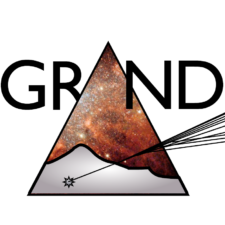Objectives of GRAND
During the course of the 2030s, in its complete configuration, GRAND will reach a sensitivity that will likely ensure the detection of astrophysical neutrinos with energies above 10 17 eV. Thanks to its sub-degree angular resolution, it will launch neutrino astronomy at these ultra-high energies! Already by 2030, GRAND will have the potential to make the first discovery of these neutrinos. GRAND will also be the largest experiment for the detection of ultra-high energy cosmic rays and photons. Moreover, GRAND will uniquely explore Fundamental Neutrino Physics, the Astrophysics of Fast Radio Bursts, and the Epoch of Reionization.
How does GRAND work?
The strategy of GRAND is to detect air showers above 10 17 eV, that are induced by the interaction of high‑energy particles in the atmosphere or underground, through their associated coherent radio-emission in the 50-200 MHz frequency band.
Why now?
With the first detection of high-energy astrophysical neutrinos (10 12–10 15 eV; IceCube) and gravitational waves (LIGO-Virgo), the past decade marked the start of the multi-messenger era. Many high-precision high‑energy astroparticle experiments are planned for the future (CTA, IceCube-Gen2, LISA…), and GRAND is needed to complete the multi-messenger picture at the highest energies. Radio detection of astroparticles is experiencing a renaissance, with drastic technological, theoretical, and numerical advances. Now is the time to develop the technique further and join the exciting momentum of high-energy astrophysics!
Check out the prototypes
that open the paths to GRAND
GRANDProto300 is a test bench for the radio-technique and a standalone experiment for cosmic-ray science
The construction of GRAND will follow a staged approach. Check out our roadmap


